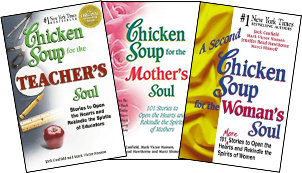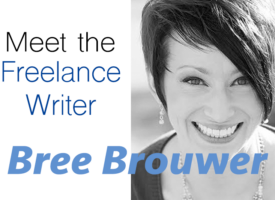Anyone who’s written a memoir knows just how painstaking that writing can be. You constantly get stuck in your head and you often feel alone. Yet many people want to read memoirs and so based on that fact alone, why not repurpose your memoir for profits?
Repurposing your content
In the world of informative writing, it is recommended to repurpose an informative piece of writing in three different ways. The same also applies to memoir writing (see markets below).
Repurposing a piece of writing means really what it says: you’re changing it so it fits a different purpose—in this case, the purpose and style of that publication whether you’re repurposing for a book or magazine.
Once you determine the genre, you then need to change part(s) of your story or chapter so that it suits the voice and style of that particular publication.
 The best way to repurpose any content is to study those publications first. Look for things like tone, voice, sentence style. If you’re new at this, you might want to do a bit of research and see which publications are closest in style and voice to yours. To determine how much you’ll need to repurpose, go by the 50-50% rule. If the publication is so different that you’ll need to repurpose more than half of the original writing, then you’re probably going to need to do a lot of work. Is it worth your time?
The best way to repurpose any content is to study those publications first. Look for things like tone, voice, sentence style. If you’re new at this, you might want to do a bit of research and see which publications are closest in style and voice to yours. To determine how much you’ll need to repurpose, go by the 50-50% rule. If the publication is so different that you’ll need to repurpose more than half of the original writing, then you’re probably going to need to do a lot of work. Is it worth your time?
In short, while your content will stay pretty much the same, the way you write it will change.
Caveat: If you are self-publishing a memoir, you basically own the rights, but repurposing content can be tricky if you are selling the rights to your manuscript through a traditional publisher, so it’s best to check your rights first.
Repurposing personal writing
The genre of personal experience type stories is a huge market. Editors are hungry for personal stories that teach a valuable lesson and share a universal message. Your personal experience may just be the story to convey what many of their readers have been experiencing.
Personal stories also need to stick in the reader’s head, especially if you are writing in the genre of creative non-fiction (which is memoir). A reader needs to know how you transformed from point A to point B. The challenge with repurposing a memoir is extracting a shorter version of your story.
Here’s a few questions to ask:

- Which main events are central to the character’s development and why?
- Which details are necessary to include for showing character development and why?
- Can you identify a takeaway point for the reader?
- What’s the universal message?
The why part is important to answer because it helps you figure out the transformation.
Finally, before repurposing any content, you’ll need to study some of the back issues of magazines or books. Here are four of the most popular ways to repurpose the content of your memoir:
Sell your story to an anthology

Chicken Soup of the Soul series are constantly coming up with new titles—many of them evergreen, which opens the door to a lot of story possibilities. They pay $200 for each accepted story and additional for reprints. Right now, they are looking at stories by and about Moms. Who doesn’t have a Mom story?
Many memoirs don’t necessarily read like Chicken Soup of the Soul stories. This is why it’s important to read also the description part of each book series to see if there is something in your story that speaks to moms or dogs or whatever the book’s subject.
Sell your story to a magazine

By far, this is one of the most popular ways to repurpose your memoir. Woman’s Day, Ladies Home Journal, Better Homes and Gardens and The New Yorker are just a few of the many magazines in need of stories. Again, these publications are looking for a specific voice and style. If you do your homework well, you may be rewarded handsomely for your efforts. Alternatively, check out your local magazines as many of them are looking for personal experiences as well.
Submit your story to a contest
 Contests are a great place to hone your writing skills and get noticed as a memoirist. There are many contests looking for personal essays. Start by subscribing to Hope C. Clark’s Funds for Writers or pay a nominal fee for her Total Funds for Writers and you’ll see what I mean. Each week, you’ll receive a gamut of literary markets, many of them paying.
Contests are a great place to hone your writing skills and get noticed as a memoirist. There are many contests looking for personal essays. Start by subscribing to Hope C. Clark’s Funds for Writers or pay a nominal fee for her Total Funds for Writers and you’ll see what I mean. Each week, you’ll receive a gamut of literary markets, many of them paying.
Other useful resources include Poets & Writers’ Grants & Awards section, FreelanceWriting.com’s Writing and Poetry Contests section, and WritingCareer.com’s Calls for Submissions.
Use parts of your story for your blog
Another very popular way to spread your story’s message and build your platform is to blog parts of your memoir.
I have been blogging consistently as part of building my platform for my memoir Accidental Soldier: What My Service in the Israel Defense Forces Taught Me about Faith, Courage and Love. Since this is more of a personal writing endeavor, you’ll get long term rewards by building a long lasting readership and a strong platform. Nowadays, traditional publishers won’t sign on a new memoirist unless s/he has a substantial following.
Contrary to what many writers think, making money from your memoir is not a one shot deal. There are many ways to make money just from your personal experience alone. This is where your story has the power to walk the talk!
About the author:
 Dorit Sasson, an award winning speaker and author and creator of Giving Voice to Your Story radio show and website, is available for consulting, speaking and writing projects. She posts regular updates to her memoir fan page, Accidental Soldier: What My Service in the Israel Defense Forces Taught Me about Faith, Courage and Love.
Dorit Sasson, an award winning speaker and author and creator of Giving Voice to Your Story radio show and website, is available for consulting, speaking and writing projects. She posts regular updates to her memoir fan page, Accidental Soldier: What My Service in the Israel Defense Forces Taught Me about Faith, Courage and Love.



